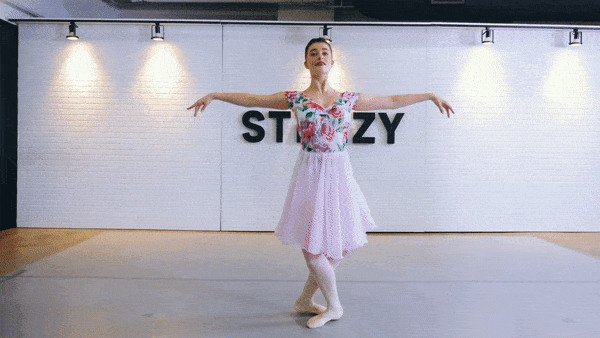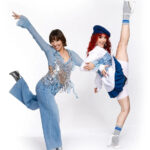Every four years, the question resurfaces across dance communities and online forums: Why isn’t Dancing At The Olympics a recognized sport? This query isn’t confined to dancers alone. Many viewers, witnessing the artistry and athleticism of gymnasts like Simone Biles during her floor routines in Tokyo 2020, have likely pondered the same thing – why dance isn’t a staple of the Olympic Games.
So, what has prevented dance from taking its place on the Olympic stage all these years?
The Scoring Conundrum: Why Dance Faced Olympic Hurdles
The announcement that Breakdancing, known as “Breaking” within the dance community, would debut at the 2024 Paris Olympics sparked excitement, signaling a new era for dance. However, this news was quickly followed by questions about how Olympic-level Breaking would be judged.
While Breaking is undeniably athletic, demanding incredible physical prowess, it transcends mere technical execution. It’s deeply rooted in personal style, the energy exchange with the crowd, and the dynamic culture of battles. This inherent subjectivity has led many to believe that scoring a Breaking competition would be inherently biased, much like the debates that erupt on social media after each episode of Dancing with the Stars regarding judging fairness.
Gymnastics: Dance in Disguise? Examining the Overlap
As someone with a background in gymnastics as both an athlete and coach, I can attest to the inseparable link between women’s gymnastics and dance. The foundational skills in gymnastics aren’t cartwheels and handstands, but rather Ballet positions, Grande Battements, and Pirouettes.
 Ballerina doing a pirouette
Ballerina doing a pirouette
Why is this balletic foundation so crucial?
Body Control and Grace: Ballet’s Role in Gymnastics
Firstly, gymnasts require exceptional body control for complex tumbling passes. Perfect spinal alignment is paramount to avoid injury. Ballet fundamentals are instrumental in developing the precise muscle control necessary for both graceful and powerful movements. This foundational training allows gymnasts to execute demanding skills with precision and minimize the risk of injury, highlighting the importance of dance elements in athletic performance.
Mental Fortitude: Dance as Recovery in Gymnastics Routines
Secondly, tumbling is not only physically taxing but also mentally challenging. The moments of dance incorporated between tumbling passes in gymnastics routines serve a vital purpose beyond just extending the performance length. Observe a gymnast poised at the edge of the floor, taking a deep breath before initiating a tumbling sequence. In that pause, she’s mentally rehearsing complex spatial calculations and muscle engagements to ensure a safe and successful landing. The dance segments provide crucial seconds for gymnasts to mentally and physically recover, gathering composure before their next high-impact skill. Without these dance interludes, a non-stop sequence of flips would deprive the gymnast of essential mental recovery time.
“Dance Moves” vs. “Dancing”: The Key Difference in Gymnastics
Despite the clear presence of “dance moves” in floor and beam routines, these movements often don’t resemble dancing in its purest form within a gymnastics context.
Consider Simone Biles’ movement in her Tokyo 2020 floor routine:
Or Suni Lee’s floor routine fluidity:
Now, compare this to dedicated dance choreography:
While gymnasts possess undeniable dance talent, as evidenced by Simone Biles’ appearance on Dancing with the Stars (See Simone Biles compete on Dancing with the Stars) or Gabby Douglas’s victory on The Masked Dancer (Gabby Douglas win The Masked Dancer), their movement during gymnastics competitions takes on a different character. They execute dance elements in precise synchronization with the music, but the primary aim isn’t to evoke emotion in the audience.
This distinction is precisely why judging dance moves within gymnastics is feasible using traditional Olympic scoring methods. Simone Biles’ arm gestures are assessed not for their artistic “vibe,” but rather as elements to be ticked off a scoresheet based on “correct” finger placement and form. This emphasis on “correctness” represents only a fraction of the expansive essence of dancing.
If dance routines were evaluated solely through the lens of gymnastics floor routine scoring, the subjective beauty and artistic depth inherent in dance could be significantly diminished.
Interested in learning more about musicality in dance? Read: The Basics of Dance Musicality
Breaking Barriers: Breakdancing Paves the Way for Olympic Dance
National and international dance competitions are held annually, spanning a vast spectrum of dance styles. Historically, there hasn’t been a compelling impetus for dance competition organizers to coalesce and develop a universally accepted, standardized scoring system applicable across diverse dance genres. This has led to a fragmented landscape where, for instance, dancers might recognize a routine as tailored specifically for “a Hip Hop International set” (Hip Hop International set), highlighting how performances are often shaped by the unique judging criteria of individual competitions.
However, Breakdancing’s inclusion in the Olympics marks a pivotal shift. It offers a glimpse into the potential for a standardized judging framework that not only acknowledges technical proficiency but also celebrates dance as a profound artistic expression. This evolution is crucial for recognizing the multifaceted nature of dance within the Olympic context.
Judging Innovation: A Balanced Approach for Olympic Breaking
The judging methodology employed at the 2018 Youth Olympics provides valuable insight into how bias can be minimized and authenticity maximized in evaluating a Breaking battle.
Explore the judging methodology demonstrated in this video from the 2018 Youth Olympics:
As the video illustrates, achieving a harmonious balance among three core dance elements—athleticism, musicality, and artistry—is paramount to fair and credible judging in Breaking. No competitor can secure victory based solely on exceptional style, musical interpretation, or physical prowess. Judges are meticulously selected to champion this balanced scoring system, encompassing both those who prioritize movement precision and those who value compelling storytelling through dance.
While acknowledging that complete elimination of bias in subjective disciplines is an ongoing challenge, it’s pertinent to question whether an Olympic dance judge is inherently more susceptible to bias than judges in disciplines like Artistic Swimming or Rhythmic Gymnastics, which also incorporate subjective artistic elements. The answer is likely no.
Ultimately, the Olympic Games transcend the realm of mere sport. They serve as a reflection of global culture, a quadrennial spectacle showcasing extraordinary human capabilities that not only demonstrate how humans can move, but profoundly move us emotionally and culturally.
Dance, having just begun its journey onto the Olympic stage, stands at a transformative juncture in 2024. This year presents a defining opportunity to demonstrate the viability of a scoring system that resonates not only with Breakers but also with dancers across all styles aspiring to Olympic gold. Until then, dancers will continue to pursue their passion and hone their craft, whether or not they are formally recognized as Olympians, driven by the intrinsic rewards of dance itself.

